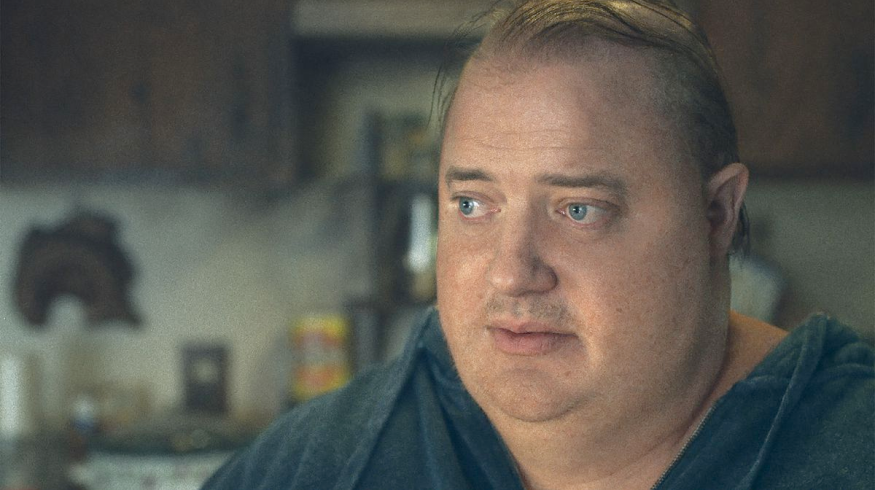
Darren Aronofsky on ‘The Whale’ and the 3 Things You Need to Create Cinema
Tips from the master himself on how to use performance, light, and camera to create true cinema.
Speaking to a packed theater at the Austin Film Festival after a recent screening of his latest film, The Whale, Darren Aronofsky — the acclaimed director known for Requiem for a Dream (2000), Black Swan (2010), and mother! (2017) — spoke quite in depth about his filmmaking process and how he creates true cinema.
Sharing the stage with screenwriter Samuel D. Hunter, who also wrote the play from which The Whale was adapted, Aronofsky packed plenty of great insights into his discussion with the festival’s moderator as well as directly with fans during a lively Q&A session.
Since graduating from Harvard University and then the American Film Institute, Aronofsky has been known for his challenging and surreal films, which delve deep into the sometimes disturbing elements of psychological fiction.
With The Whale, in particular, Aronofsky pulls no punches as he crafts one of his career’s most unnerving — yet oddly endearing — films. And while based on a stage play, the film is also perhaps Aronofsky’s most cinematic, which he credits to his focus on the “three things” you need to create cinema.
Let’s explore these three elements and examine how they’re used in The Whale, as well as try to provide insights into how you can channel these three distinctions into projects of your own.
1. Performance
For those interested in seeing The Whale, it’s worth noting that the film begins and ends with Brendan Fraser’s portrayal of the lead character in the movie. And while that might seem like a cop-out to credit working with great actors as a critical element of cinema, you have to understand that even directors like Aronofsky didn’t start working with Brendan Fraser or Natalie Portman, or Mickey Rourke.
Great performances come from great directing, and in the case of The Whale, in particular, Aronofsky shared during the Q&A at the screening that their rehearsal process for the film was quite extensive as he and the actors spent several weeks working through the same deliveries of every piece of blocking and line of dialogue.
I love that this is the first core element of cinema to Aronofsky, and so many filmmakers seem to ignore this part of the equation. It’s understandable that while in film school, you might not get tons of time to rehearse and work with the most talented of performers, but once you’re developing your projects, any omission of focus that doesn’t include large amounts of time for nurturing great performances you’re failing the process overall.
2. Lighting

With as much of a rounded cinematic upbringing as possible, Aronofsky certainly understands that after performances, the second most critical part of any project is the lighting. And even in the case of The Whale, which (as its stage play origins might dictate) takes place almost entirely in a tiny apartment, lighting is a massive part of the story and overall mood of the film.
As time goes on and the weather changes to reflect the film’s various themes, Aronofsky makes great use of lighting to make the apartment feel like a much more significant and more immersive part of the story. In fact, during the Q&A, Aronofsky shared that they spent a great deal of time working on the layout of the apartment to ensure that they could provide enough lighting for every angle and situation so that the image would never feel flat or dull.
Lighting, in general, is another key component of any film or video project which can quickly either expose a novice filmmaker or elevate a seasoned pro. And even on “big” projects like The Whale (which is quite micro-budget compared to some of Aronofsky’s previous efforts), lighting doesn’t have to be super fantastical.
Instead, if you can focus on the core elements of three-point lighting and learn how to use light and shadow to help define your characters and their emotions, you, too, can master this part of the cinematic experience.
3. Camera

Finally, to wrap up Aronofsky’s short list of the key elements of creating cinema, the seasoned director finishes his thought with the camera. Another part of this quote that I love as so many in the industry wouldn’t hesitate to start with the camera as the first and be-all, end-all piece of this list.
Young filmmakers look to acquire cameras that have the most resolution, the fastest frame rates, and better dynamic range. However, great films are shot on “poor” cameras all the time. From Steven Soderberg’s obsession with shooting films on iPhones to plenty of low-budget and indie films opting to use their favorite DSLR or mirrorless instead of always ponying up for an ARRI Alexa, it’s never the camera that makes or breaks a project.
Instead, the camera is used to help capture all of the best elements of a project that might make it great. In this case, the film was shot in 4:3, (a smaller square-like ratio that derived from television sets of yesterday), and this is visually genius because the smaller width of the resolution means Charlie’s body (Fraser) takes up a larger proportion of the frame. This in turn enhances the perception of his size and the entrapment he is both figuratively and literally in.
The proponents of the camera adding to your film go far beyond the top selling points of the latest Sony cine camera. The ratio the movie was captured in has little to do with the selling points of most modern cameras, yet the camera settings have added a compelling dynamic to the movie. And Aronofsky, more than anyone, should know this quite well as his first feature debut Pi was shot on an Aaton XTR 16mm film camera on a borrowed budget of roughly $60,000.
Lessons from The Whale

At the end of the day, while Aronofsky’s latest film is sure to be quite divisive in its critical and commercial response, it’s genuinely another great example of what intentional filmmaking looks like and what true cinema can be.
The fact that Aronofsky was out at film festivals like the Austin Film Festival and taking the time to engage with audiences full of aspiring filmmakers and screenwriters should be an earnest sign of how much he cares about the craft.
And despite its single location and basic premise, The Whale is about as ambitious of a film project as they come as Aronofsky’s and the writer Hunter’s attempt to tackle some of the most significant issues and topics of our time.
If you’d like to find some more filmmaking advice and inspiration, check out these additional articles from the blog below.
- Analyzing (and Crafting) Horror with ‘Barbarian’ Editor Joe Murphy
- Ben Davis, the Next Big Cinematography Star?
- The Art of Editing Superhero Films with the Editing Team Behind ‘Black Adam’
- Sound Effects: The Unsung Heroes of the Film Industry
- Werewolf by Night: Marvel’s Foray into Classic Genre Cinema Begins





